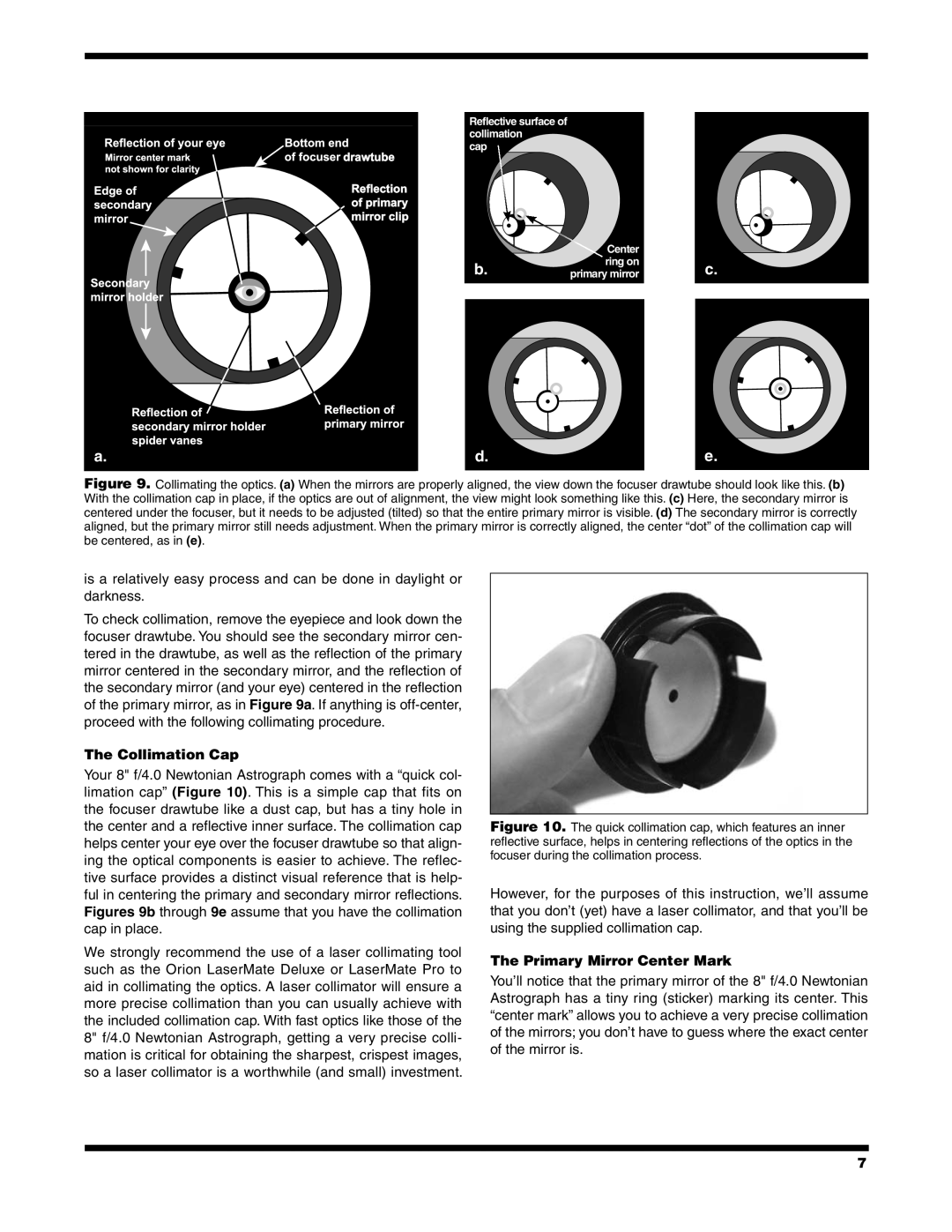
![]()
![]()
![]()
![]()
![]()
![]()
![]() drawtube
drawtube
Reflection of primary mirror clip
a.
Reflective surface of collimation
cap
Center
b.ring on primary mirror
d.
c.
e.
Figure 9. Collimating the optics. (a) When the mirrors are properly aligned, the view down the focuser drawtube should look like this. (b) With the collimation cap in place, if the optics are out of alignment, the view might look something like this. (c) Here, the secondary mirror is centered under the focuser, but it needs to be adjusted (tilted) so that the entire primary mirror is visible. (d) The secondary mirror is correctly aligned, but the primary mirror still needs adjustment. When the primary mirror is correctly aligned, the center “dot” of the collimation cap will be centered, as in (e).
is a relatively easy process and can be done in daylight or darkness.
To check collimation, remove the eyepiece and look down the focuser drawtube. You should see the secondary mirror cen- tered in the drawtube, as well as the reflection of the primary mirror centered in the secondary mirror, and the reflection of the secondary mirror (and your eye) centered in the reflection of the primary mirror, as in Figure 9a. If anything is
The Collimation Cap
Your 8" f/4.0 Newtonian Astrograph comes with a “quick col- limation cap” (Figure 10). This is a simple cap that fits on the focuser drawtube like a dust cap, but has a tiny hole in the center and a reflective inner surface. The collimation cap helps center your eye over the focuser drawtube so that align- ing the optical components is easier to achieve. The reflec- tive surface provides a distinct visual reference that is help- ful in centering the primary and secondary mirror reflections. Figures 9b through 9e assume that you have the collimation cap in place.
We strongly recommend the use of a laser collimating tool such as the Orion LaserMate Deluxe or LaserMate Pro to aid in collimating the optics. A laser collimator will ensure a more precise collimation than you can usually achieve with the included collimation cap. With fast optics like those of the 8" f/4.0 Newtonian Astrograph, getting a very precise colli- mation is critical for obtaining the sharpest, crispest images, so a laser collimator is a worthwhile (and small) investment.
Figure 10. The quick collimation cap, which features an inner reflective surface, helps in centering reflections of the optics in the focuser during the collimation process.
However, for the purposes of this instruction, we’ll assume that you don’t (yet) have a laser collimator, and that you’ll be using the supplied collimation cap.
The Primary Mirror Center Mark
You’ll notice that the primary mirror of the 8" f/4.0 Newtonian Astrograph has a tiny ring (sticker) marking its center. This “center mark” allows you to achieve a very precise collimation of the mirrors; you don’t have to guess where the exact center of the mirror is.
7
